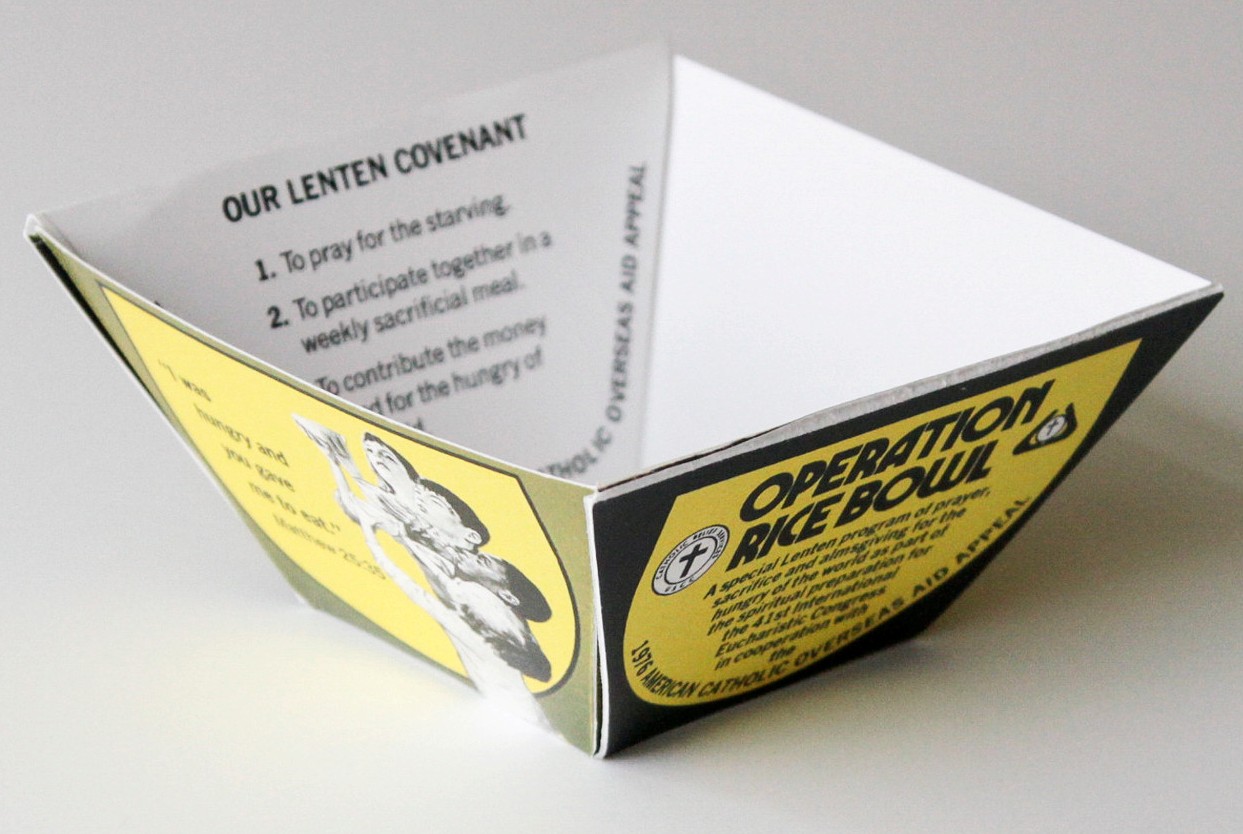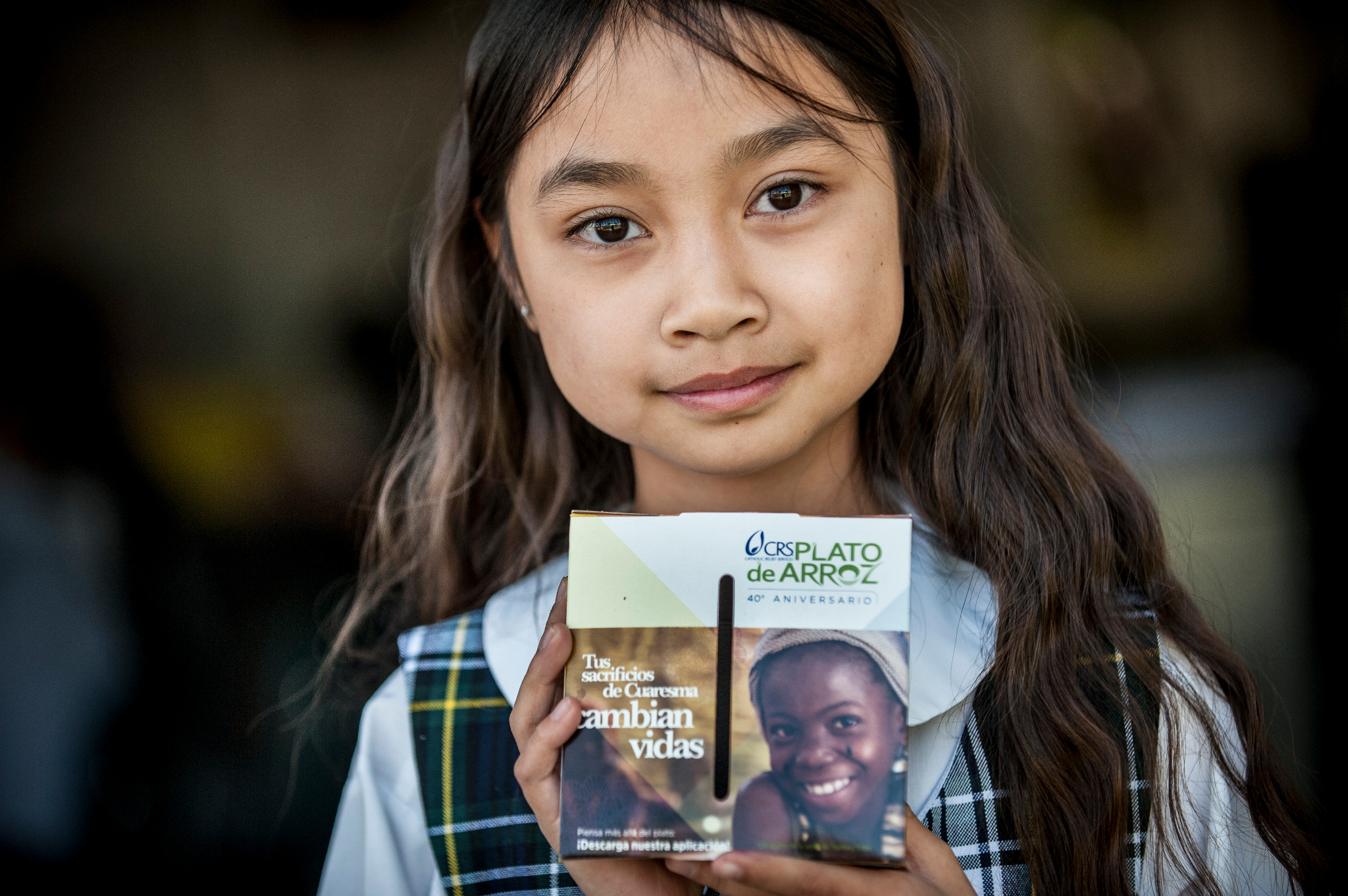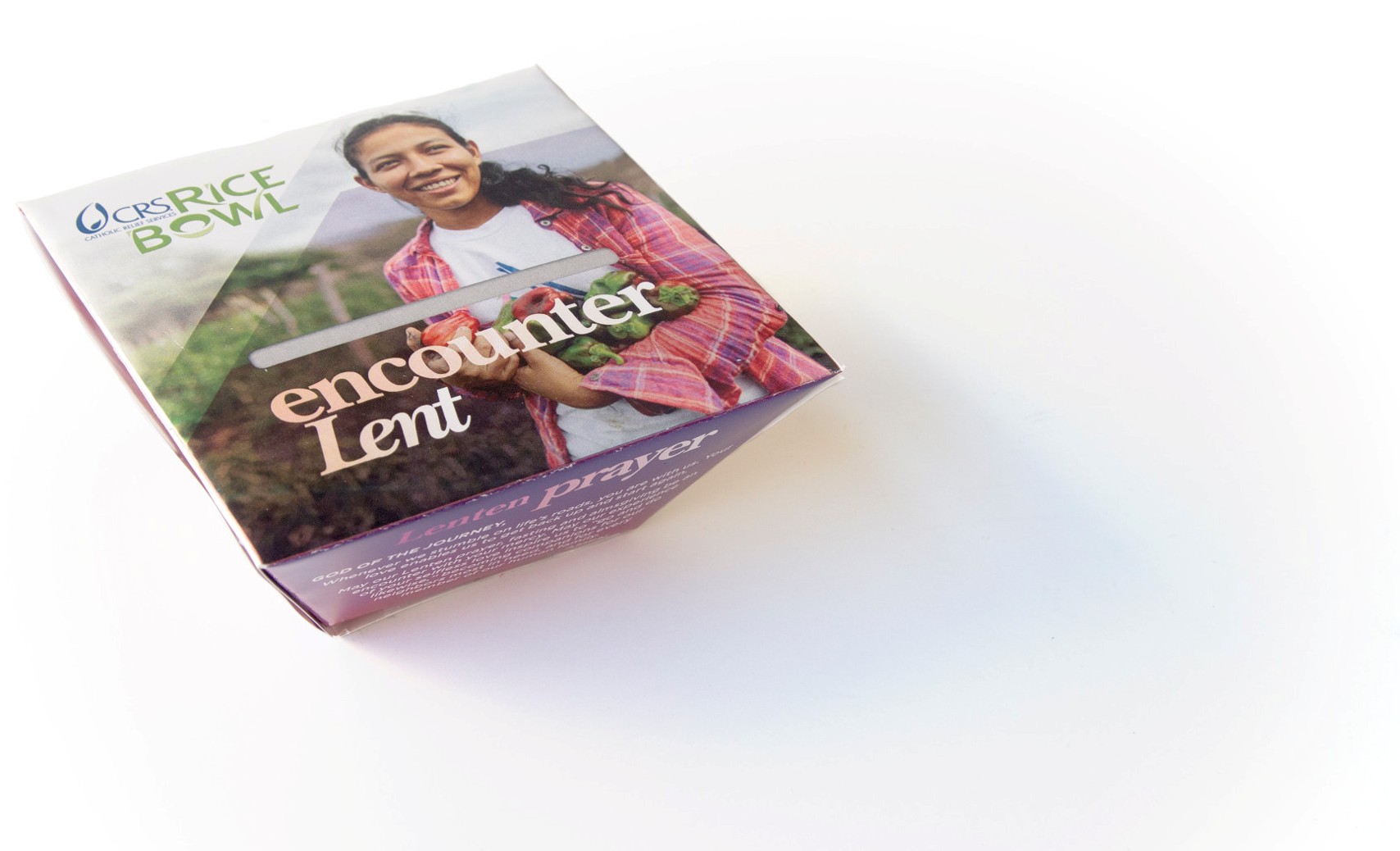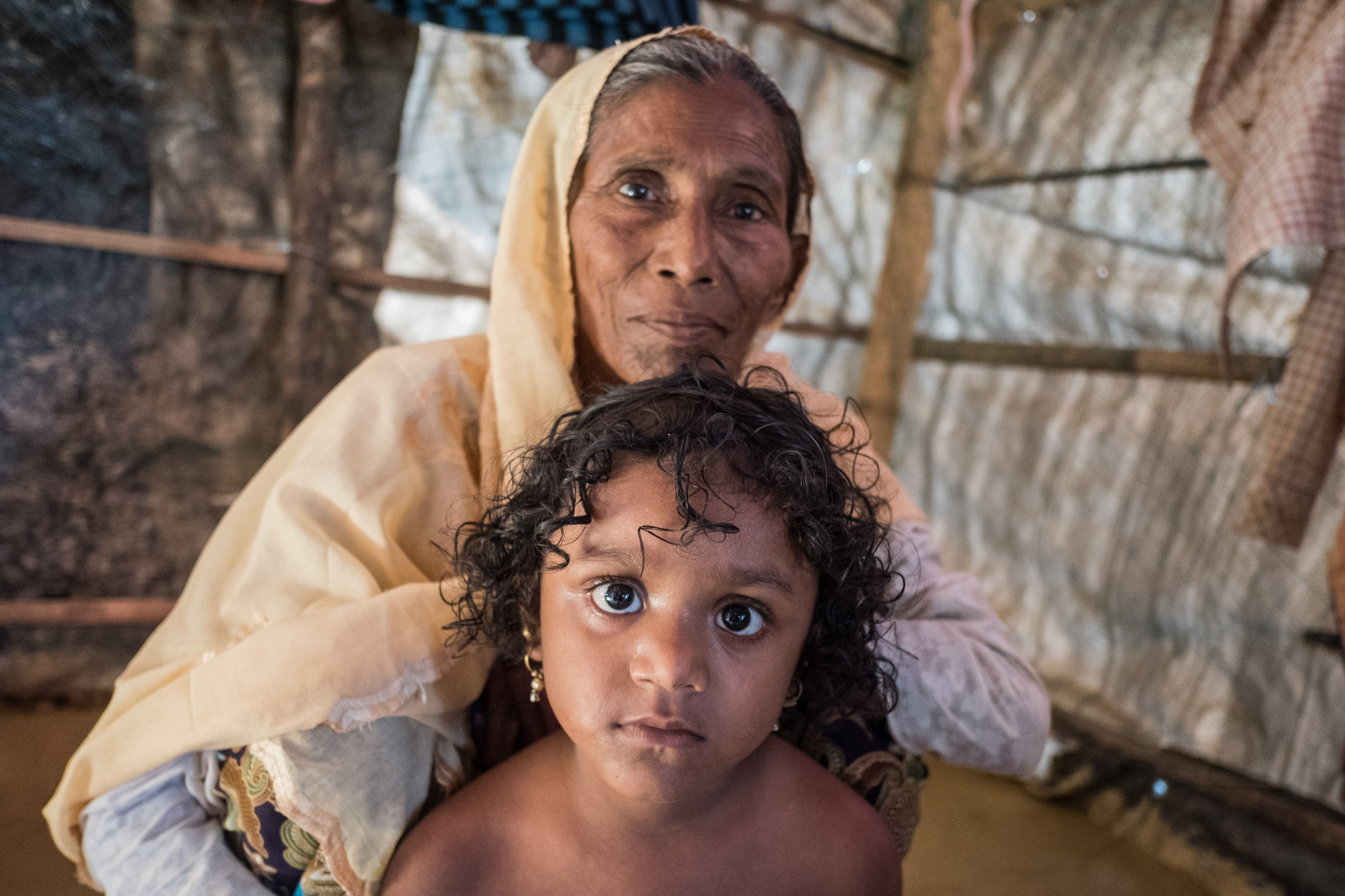Feeding a Need With Love
It was 1975, and Monsignor Robert J. Coll of Allentown, Pennsylvania, got an idea about how to end global hunger: Bring the problem home, and raise some money in the process.
As he told People magazine in 1976, he wanted well-fed Americans to be temporarily “hungry enough to hurt,” so they would know what “500 million of our fellow human beings feel like 7 days a week.”
So was born what is now CRS Rice Bowl. It asked families to eat a “sacrificial meal” and put the money they saved by eating inexpensively in their cardboard Rice Bowls. As their sacrifice led them to understand hunger, their donations helped feed the hungry.
Catholic Relief Services’ Jim DeHarpporte, who worked in India at the time, remembers that initial Rice Bowl collection, which brought in $25,000.
“The funds provided by Rice Bowl were used to purchase wheat and lentils,” says DeHarpporte, now CRS regional director for the West Coast. “Because of the poverty in Calcutta, most children suffered from low birth weight and were breastfed long after they needed supplementary food.”
Just as Rice Bowl was picking up speed, the 41st Eucharistic Congress in Philadelphia helped it gain national recognition. Maureen McCullough, now CRS regional director for the Northeast/Mid-Atlantic, remembers how the planners of the Congress hoped CRS Rice Bowl Lenten meals and the Eucharistic meals would enrich each other. Many bishops saw it as a way to help the family table become the family altar.
It was on the second day of the Congress that Rice Bowl was launched. Mother Teresa came from Calcutta and led attendees in a prayerful and symbolic bread-breaking ceremony. “It reminded all that we are called to break open our hearts and lives to the needs of others,” McCullough says. “Four decades later, I believe CRS Rice Bowl does just that for all who participate.”
CRS Rice Bowl quickly expanded into a national program. Of the funds raised, 75% were sent overseas and 25% aided local feeding efforts. In Seattle, Diocesan Director J.L. Drouhard says the program raised more than $72,000 that first year.
“CRS truly considers dioceses, parishes and schools as partners in its mission, a model that has created a unique ownership by our people. They consider it their Lenten program of solidarity,” Drouhard says. “My kids grew up with Rice Bowl as a sacramental feature of their Catholic upbringing. During Lent, we always traveled with boxes of Rice Bowls in the trunk of our car, ready to be dropped off at parishes that had run out. The kids have grown up, moved away, but they expect a Rice Bowl personally mailed by their dad to arrive by Ash Wednesday.”
Today, CRS Rice Bowl involves millions of Catholics of all ages every year. It has raised more than $250 million to date. The nickels, dimes and quarters first collected in Allentown now hold a legacy that reverberates around the world.
In fact, DeHarpporte watched that inaugural grant in Calcutta springboard the Child in Need Institute, which focuses on infant malnutrition. “CINI is still serving the poor in India. CRS Rice Bowl can be proud that this Institute began with funds contributed by that first Rice Bowl grant in 1975.”
Our Passion
We are called to embrace our neighbors all around the world. CRS Rice Bowl—our Lenten faith-in-action program—provides a tangible way to do just that.
Helping the Refugee Never Become One
Perhaps the best way to heed Pope Francis’ call to “share the journey” of migrants and refugees is to help ensure that journey never has to begin. Millions have been driven from their homes by violence, poverty, oppression, drought, disease and despair. They did not want to leave their home, their loved ones. Many could see no choice but to go in search of safety and dignity. So much of our work at Catholic Relief Services is aimed at giving people another choice. A good example of that is CRS Rice Bowl.
Founded in 1975, CRS Rice Bowl annually asks faithful Catholics to sacrifice for their brethren overseas. That money not only delivers food—it delivers seeds, tools, techniques and training that helps families stay together. Because they can grow enough food to eat and sell, a father no longer migrates to the city for work. A son doesn’t get on a leaky boat hoping to make it to Europe for a paycheck that can be sent back home. A daughter avoids human traffickers.
CRS works in countries around the world, sharing the journey of many displaced families. We know they were driven from their homes by factors beyond their control. So, through programs like CRS Rice Bowl, we try to help people regain control over their futures through factors like building peace, drilling wells, distributing seeds, organizing savings groups, restoring topsoil and, in short, helping the refugee never become one.








